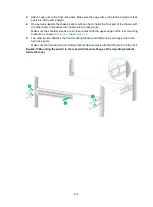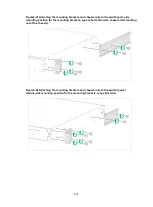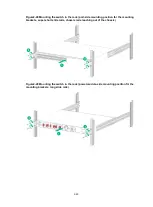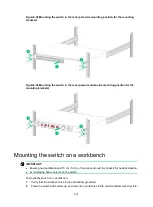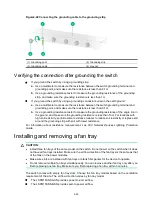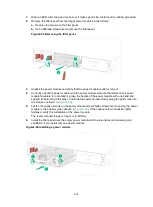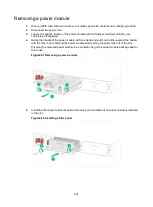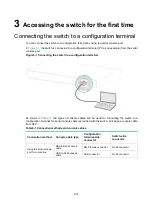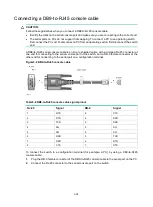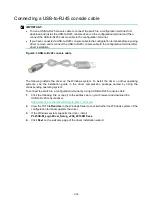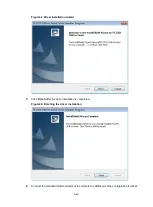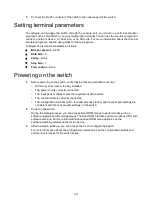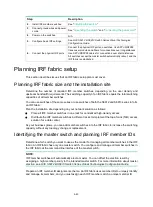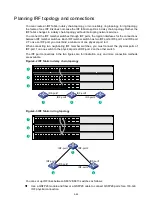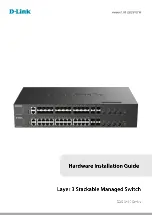
2-30
Figure2-40 Connecting the grounding cable to the grounding strip
(1) Grounding post
(2) Grounding strip
(3) Grounding cable
(4) Hex nut
Verifying the connection after grounding the switch
•
If you ground the switch by using a grounding strip:
a.
Use a multimeter to measure the resistance between the switch grounding terminal and
grounding point, and make sure the resistance is less than 0.1
Ω.
b.
Use a grounding resistance tester to measure the grounding resistance of the grounding
strip, and make sure the grounding resistance is less than 1
Ω.
•
If you ground the switch by using a grounding conductor buried in the earth ground:
a.
Use a multimeter to measure the resistance between the switch grounding terminal and
grounding point, and make sure the resistance is less than 0.1
Ω.
b.
Use a grounding resistance tester to measure the grounding resistance of the angle iron in
the ground, and make sure the grounding resistance is less than 10
Ω
. For locations with
high soil resistivity, sprinkle some resistance reducer to reduce soil resistivity or replace soil
around the grounding strip with soil with lower resistance.
For information about resistance measurement, see
H3C Network Devices Lightning Protection
Guide
.
Installing and removing a fan tray
CAUTION:
•
Install three fan trays of the same model on the switch. Do not power on the switch when it does
not have all fan trays installed. Make sure the air flow direction of the fan trays is the same as that
of the fans on the power modules.
•
Make sure slots are installed with fan trays or blank filler panels for the device to operate.
•
Do not remove multiple fan trays simultaneously. You can remove another fan tray only after you
finish replacing one fan tray. Make sure you finish replacing a fan tray within 3 minutes.
The switch comes with empty fan tray slots. Choose the fan tray models based on the ventilation
requirement of the site. The air flow direction varies by fan tray model.
•
The LSPM1FANSA-SN provides power-to-port air flow.
•
The LSPM1FANSB-SN provides port-to-power air flow.

